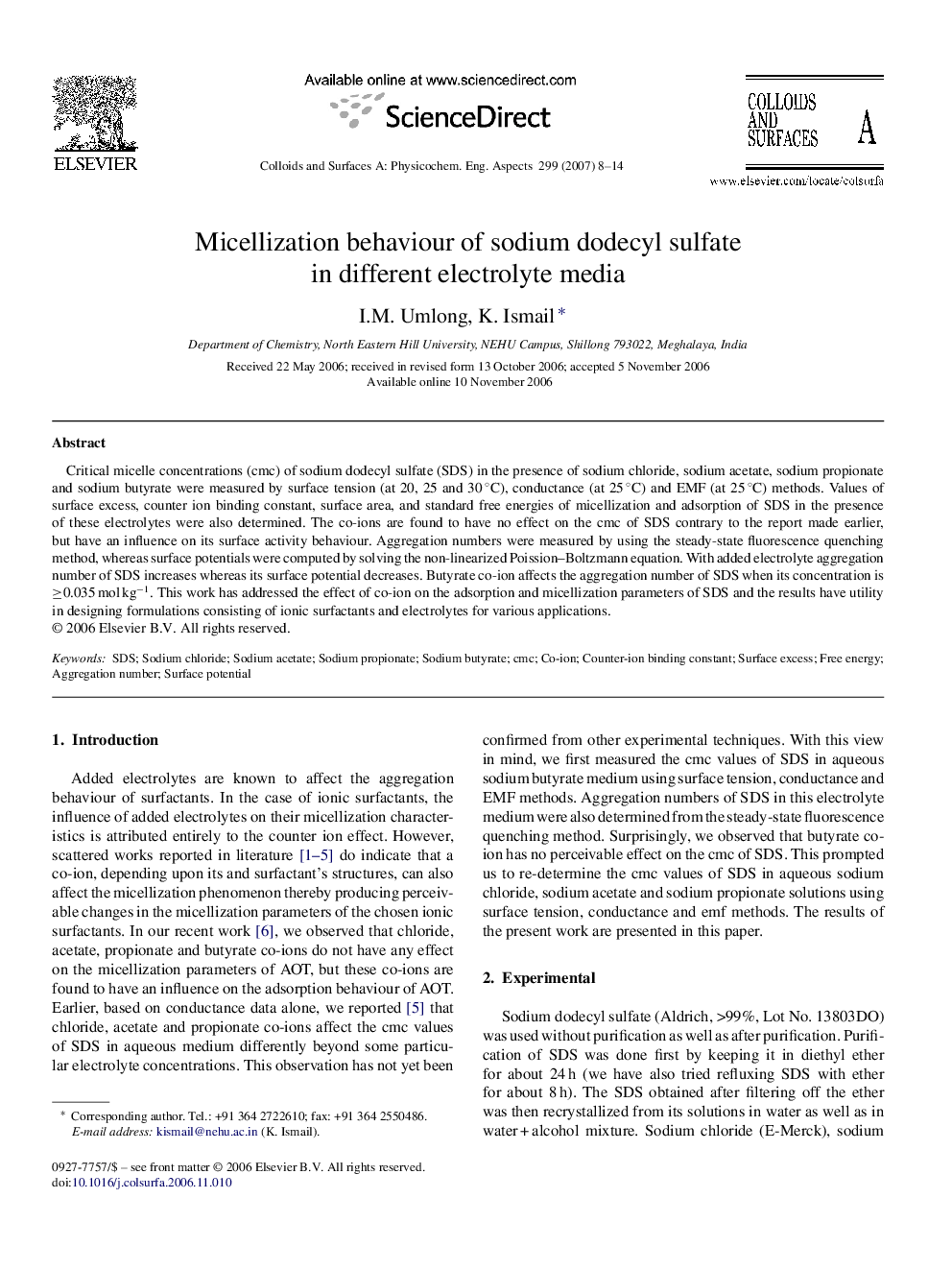| کد مقاله | کد نشریه | سال انتشار | مقاله انگلیسی | نسخه تمام متن |
|---|---|---|---|---|
| 597659 | 1454073 | 2007 | 7 صفحه PDF | دانلود رایگان |

Critical micelle concentrations (cmc) of sodium dodecyl sulfate (SDS) in the presence of sodium chloride, sodium acetate, sodium propionate and sodium butyrate were measured by surface tension (at 20, 25 and 30 °C), conductance (at 25 °C) and EMF (at 25 °C) methods. Values of surface excess, counter ion binding constant, surface area, and standard free energies of micellization and adsorption of SDS in the presence of these electrolytes were also determined. The co-ions are found to have no effect on the cmc of SDS contrary to the report made earlier, but have an influence on its surface activity behaviour. Aggregation numbers were measured by using the steady-state fluorescence quenching method, whereas surface potentials were computed by solving the non-linearized Poission–Boltzmann equation. With added electrolyte aggregation number of SDS increases whereas its surface potential decreases. Butyrate co-ion affects the aggregation number of SDS when its concentration is ≥0.035 mol kg−1. This work has addressed the effect of co-ion on the adsorption and micellization parameters of SDS and the results have utility in designing formulations consisting of ionic surfactants and electrolytes for various applications.
Journal: Colloids and Surfaces A: Physicochemical and Engineering Aspects - Volume 299, Issues 1–3, 15 May 2007, Pages 8–14